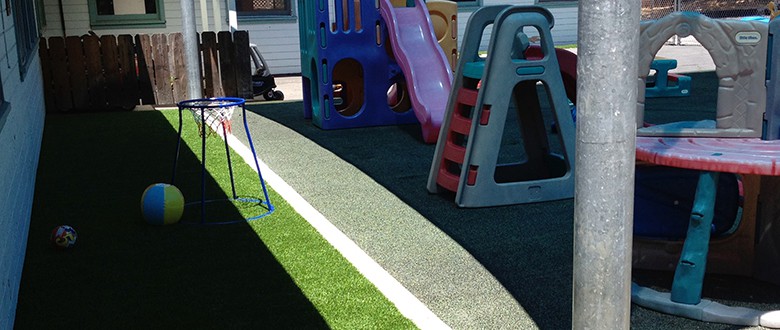Artificial grass is a perfect choice for homeowners everywhere. But, there are benefits for people who live in warm weather climates. When temperatures rise above 100 degrees, natural grass lawns are often the first things to get damaged. A lot of water is required to keep natural grass looking great in hot weather. Unfortunately, the cost of water adds up. In addition; many places such as the Southwest are in extreme drought conditions and water is sometimes rationed. For people in hot climates, an artificial grass installation makes sense. In fact, it can often pay for itself over time. Not only do homeowners save in reduced water usage and maintenance costs, but many municipalities in drought conditions offer tax credits or other benefits for people who install fake grass. This is because they know that artificial turf conserves water and can help the environment in the long run as well.
There are some considerations you should make when installing artificial grass in warm weather environments. While today’s artificial grass stays much cooler than turfs of the past, it can sometimes get hot if exposed to continual direct sunlight. You can avoid this by putting in trees or other covering that will provide shady areas for your grass. Another option is to lightly water your grass on hot days to cool it down. Natural grass stays cooler because water runs through it. By hosing off your artificial grass, it will cool down like natural grass does.
Natural grass lawns are responsible for a large portion of residential water usage and are not drought friendly. Synthetic grass requires very little water and is drought-friendly. As with anything there is a trade-off: You can have a natural grass lawn that is cooler on hot days but gets muddy after it rains where you have too wait until it dries out before you can enjoy it, or you can have artificial turf that never gets muddy but might get a little hot on occasion. You can always take steps to keep your artificial lawn cooler on hot days.
Most owners with artificial grass do not report an increased surface temperature that keeps them from enjoying their grass. However, if your artificial grass gets too hot to enjoy then there are several steps you can take to help change that.
If you haven’t installed yet, you can help avoid hot artificial grass with your choice of materials and the inclusion of subsurface cooling systems. For example, you can choose a lighter color of grass and a lighter color of infill to help keep the temperature down. You can also avoid rubber infills that tend to absorb and transfer heat than non-rubber options.
Your next option is to install artificial grass under large trees. This is typically an area where natural grass generally does not grow well. As an added benefit to having a synthetic lawn, the trees will help keep the area cooler and provide a shaded area for your children to play or for you to relax, if other areas of your lawn are a bit too warm.
Other ways to keep your synthetic lawn cool include:
- Covering all or part of your lawn with shade sails to block direct sunlight, reduce heat absorption and provide a shady spot to rest or play!
- Install a retractable awning that you can open on very hot days to provide shade for your lawn
- Rinse your lawn with a garden hose to quickly cool down the surface temperature.
- If you need to cool off your lawn before guests arrive, put a portable canopy over the area that feels too hot.
It has become typical to add shading outdoor living or entertaining area, since most of us prefer hanging out in the shade on hot days. So if you are concerned about artificial grass getting hot, you can simply make sure your backyard layout includes some shade over certain parts of your lawn.
GOT A QUESTION? ASK US!


